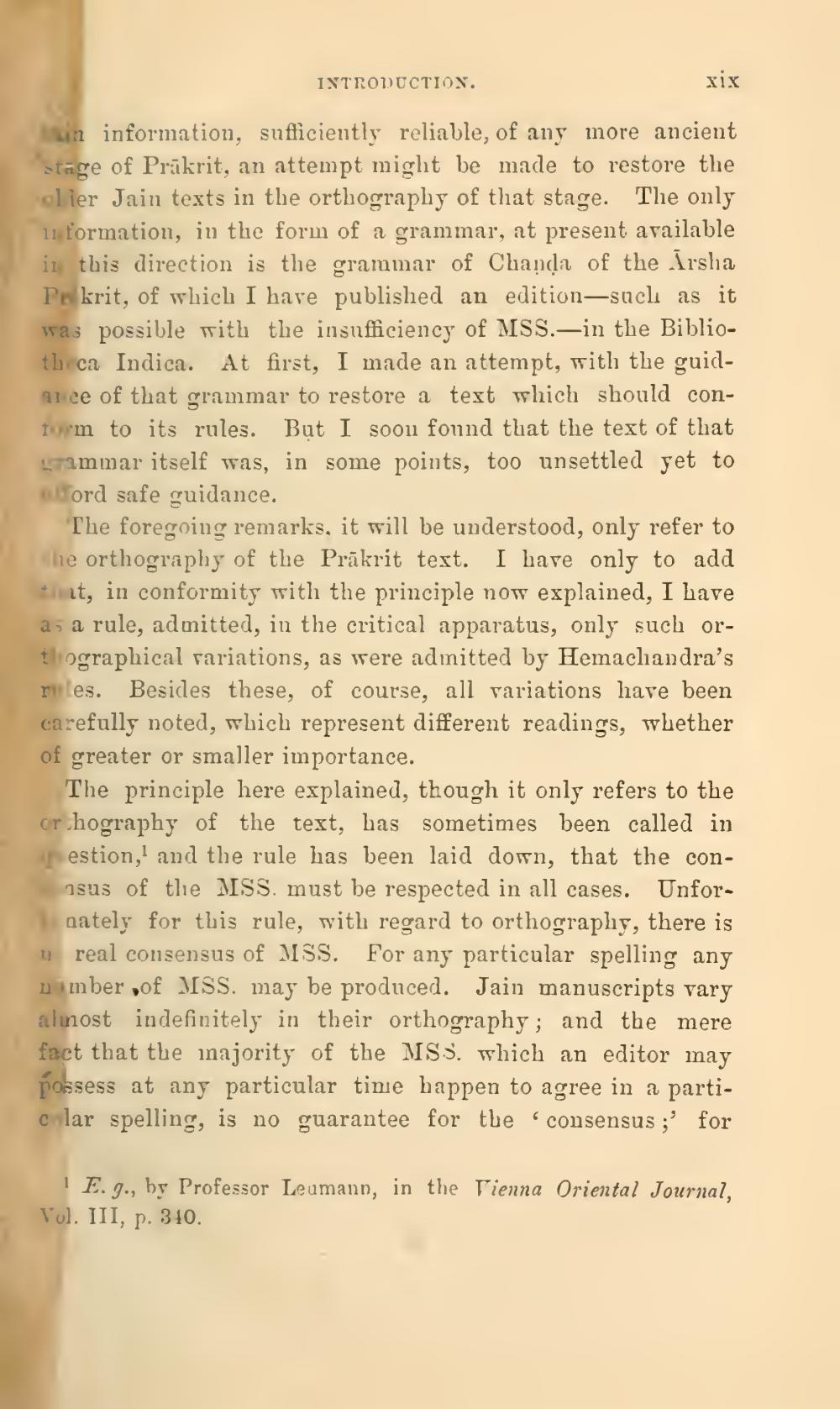________________
INTRODUCTIOX.
xix
un information, sufficiently reliable, of any more ancient stage of Prākrit, an attempt might be made to restore the olier Jain texts in the orthography of that stage. The only 11formation, in the form of a grammar, at present available in this direction is the grammar of Chanda of the Irsha Po krit, of which I have published an edition such as it was possible with the insufficiency of MSS.-in the Bibliotheca Indica. At first, I made an attempt, with the guidance of that grammar to restore a text which should contorm to its rules. But I soon found that the text of that rammar itself was, in some points, too unsettled yet to ord safe guidance.
The foregoing remarks, it will be understood, only refer to dhe orthography of the Prākrit text. I have only to add ht, in conformity with the principle now explained, I have as a rule, admitted, in the critical apparatus, only such orthographical rariations, as were admitted by Hemachandra's rules. Besides these, of course, all variations have been carefully noted, which represent different readings, whether of greater or smaller importance.
The principle here explained, though it only refers to the or hography of the text, has sometimes been called in
estion, and the rule has been laid down, that the conasus of the MSS. must be respected in all cases. Unfornately for this rule, with regard to orthography, there is
real consensus of MSS. For any particular spelling any nimber ,of JSS. may be produced. Jain manuscripts vary almost indefinitely in their orthography; and the mere fact that the inajority of the MSS. which an editor may possess at any particular tine happen to agree in a particlar spelling, is no guarantee for the consensus;' for
I E.g., by Professor Leumann, in the Vienna Oriental Journal, Vol. III, p. 340.




